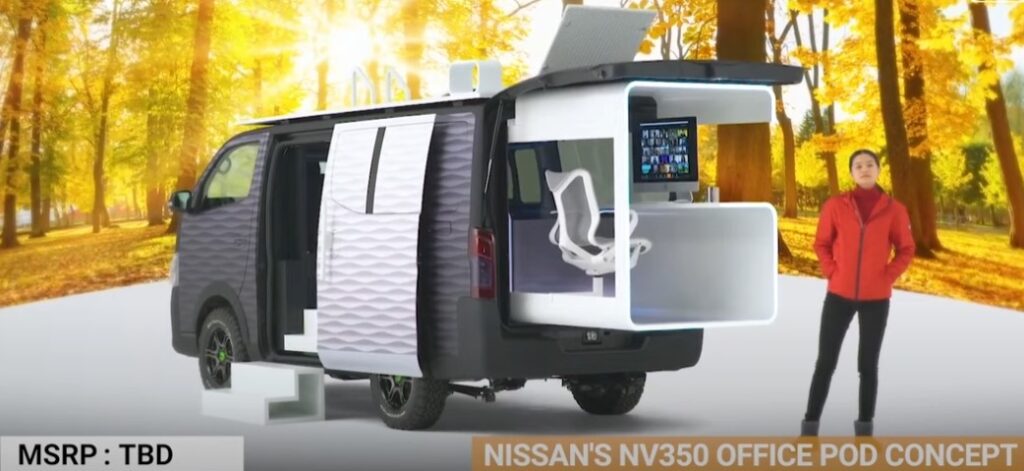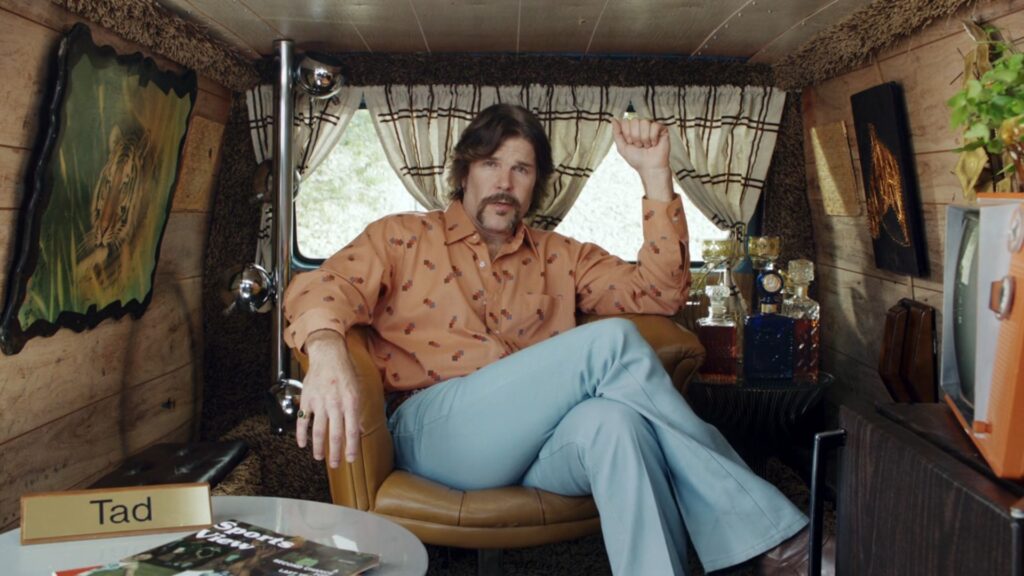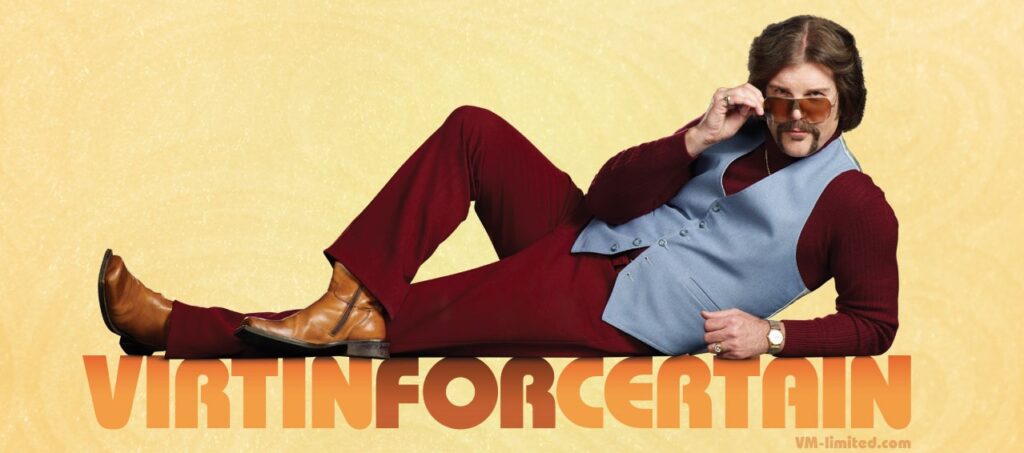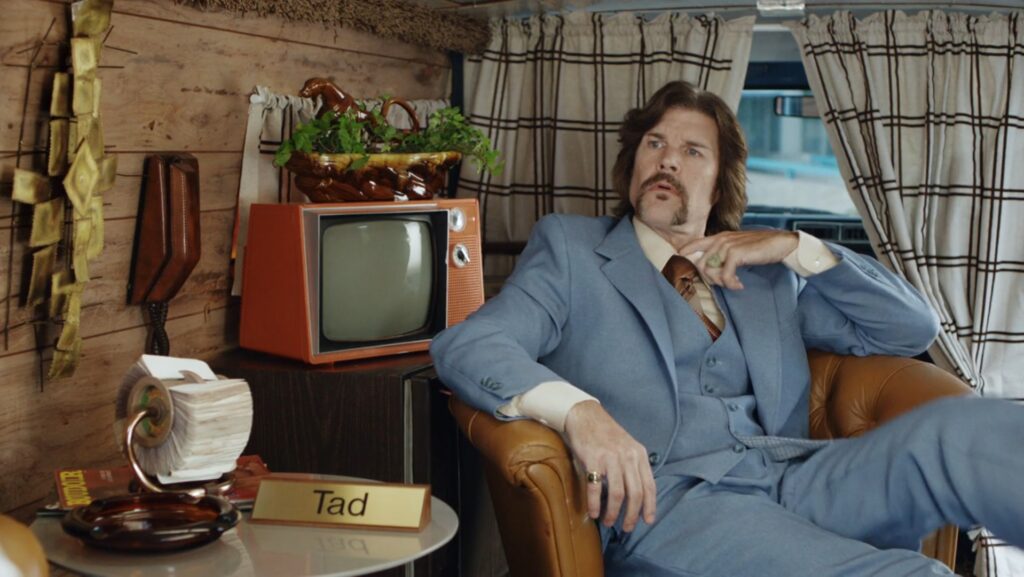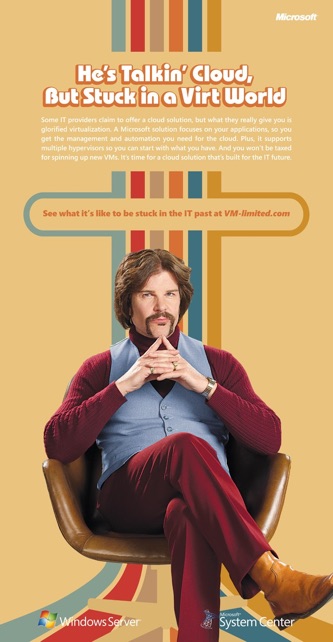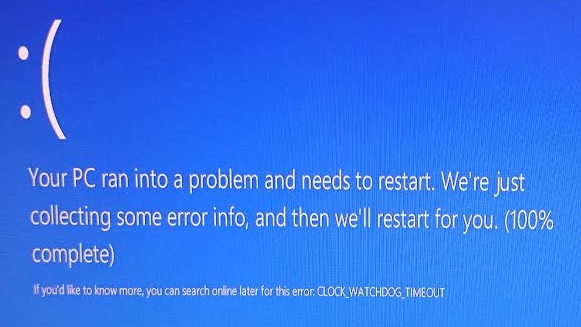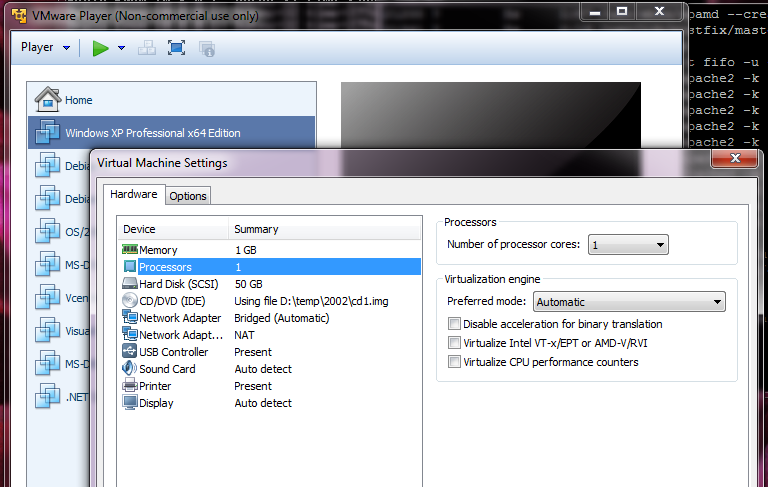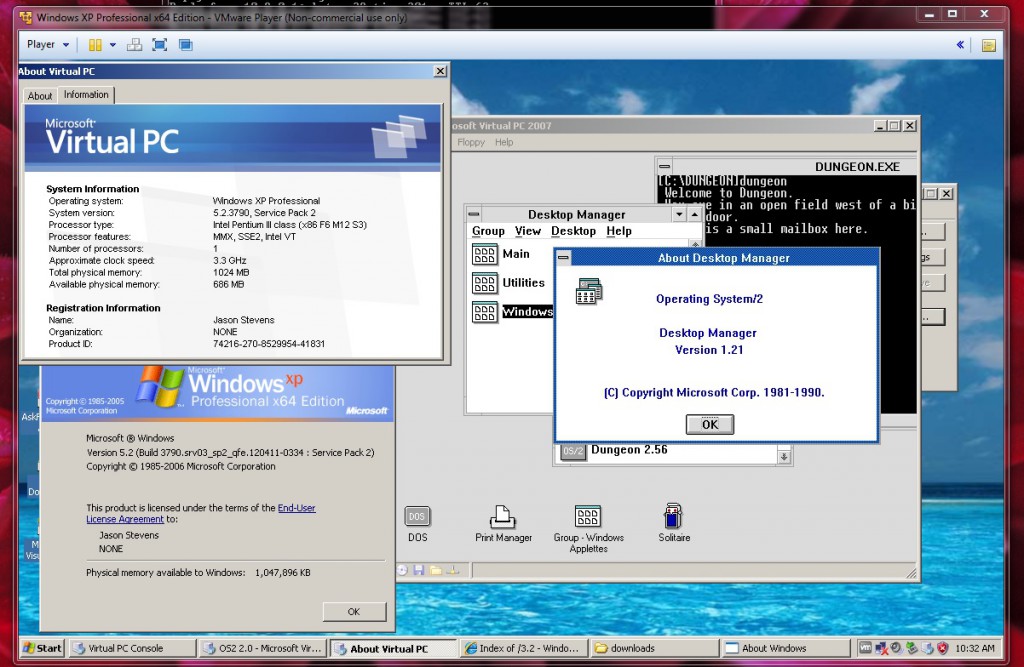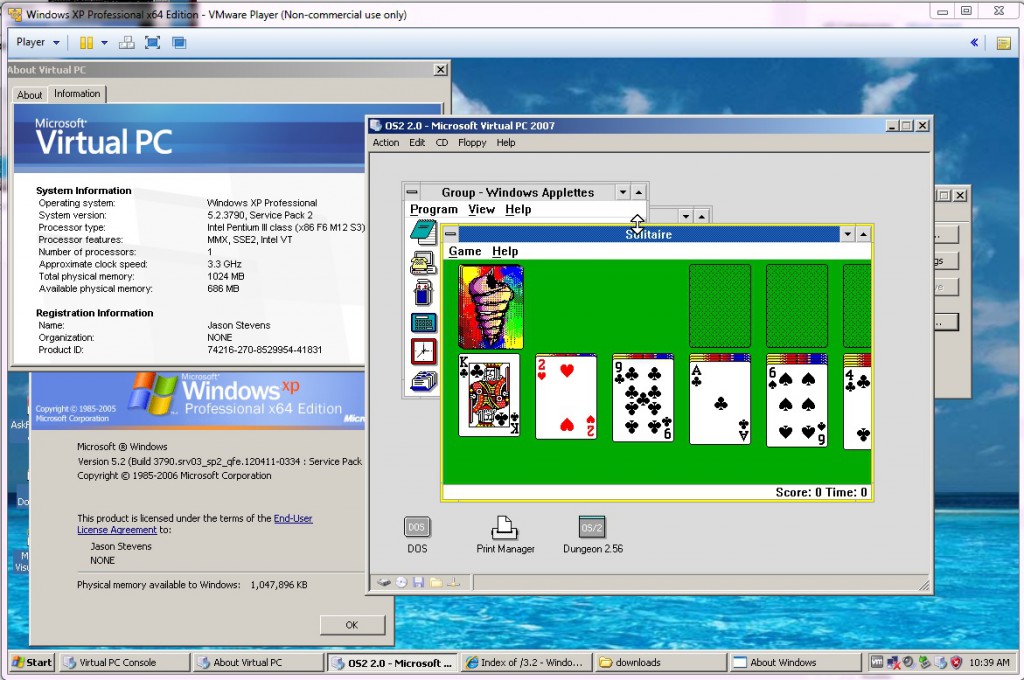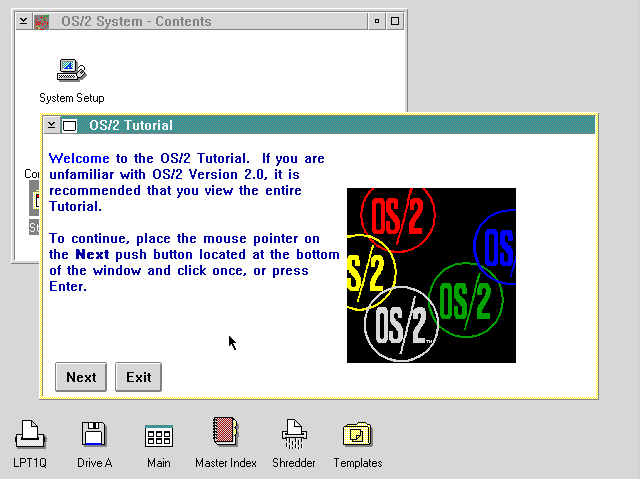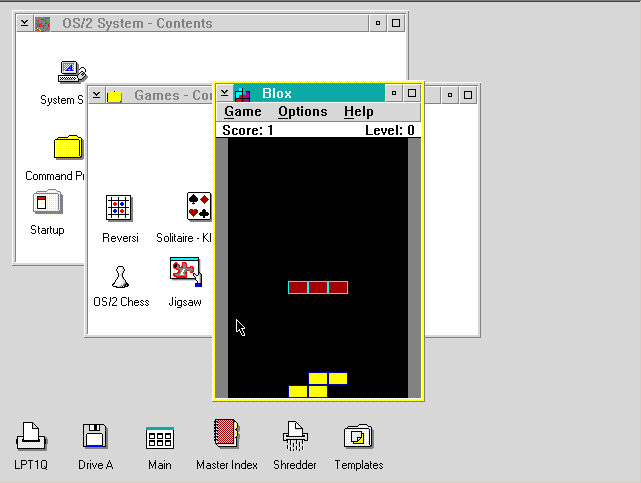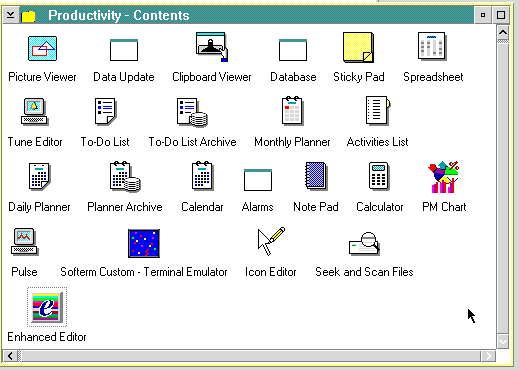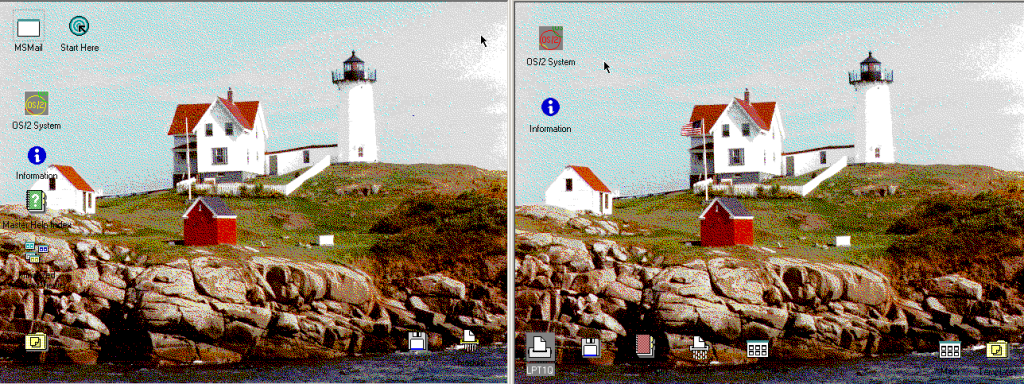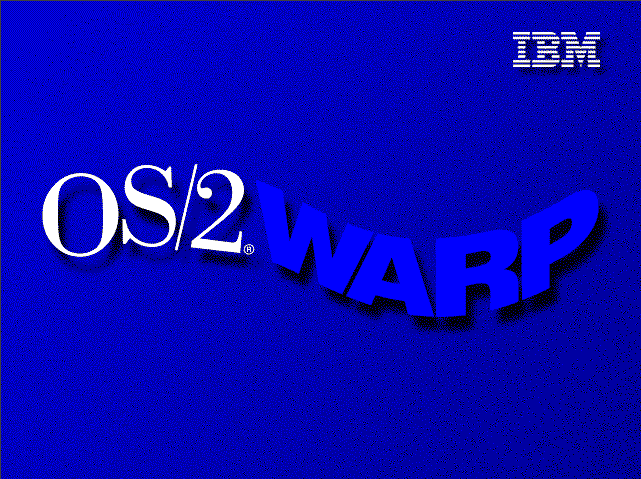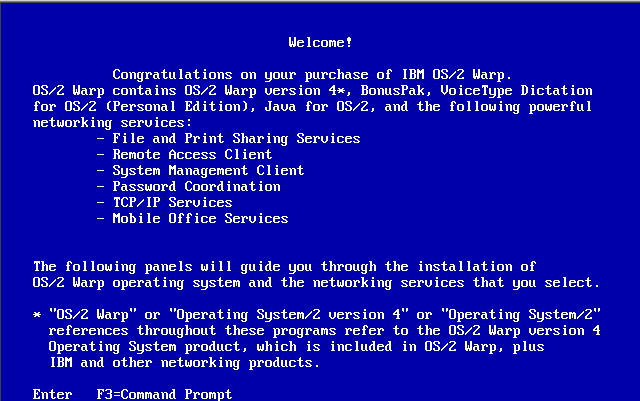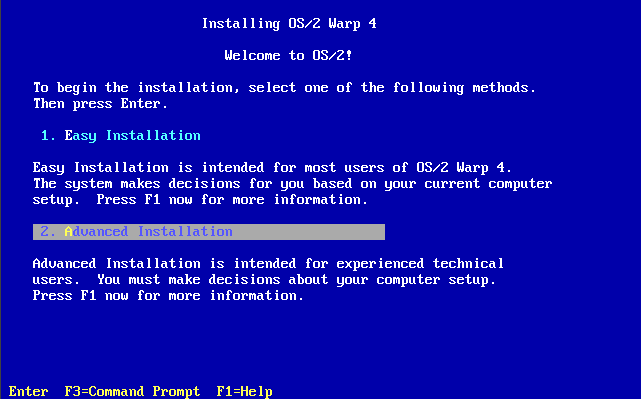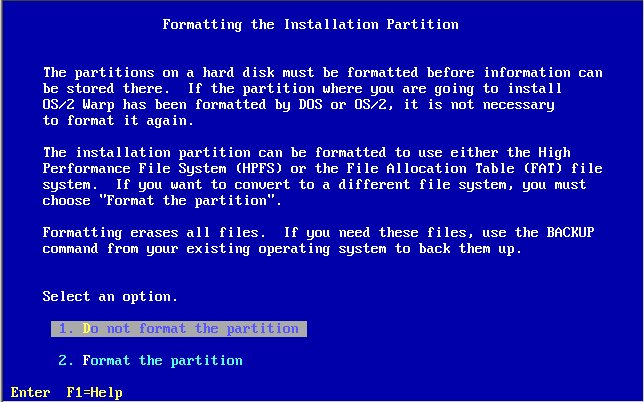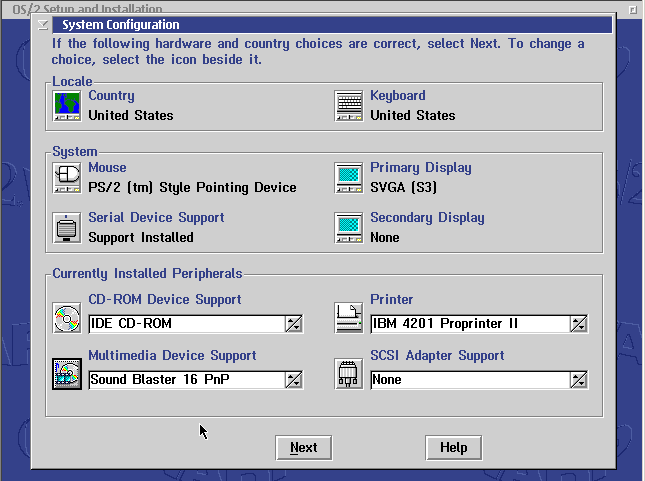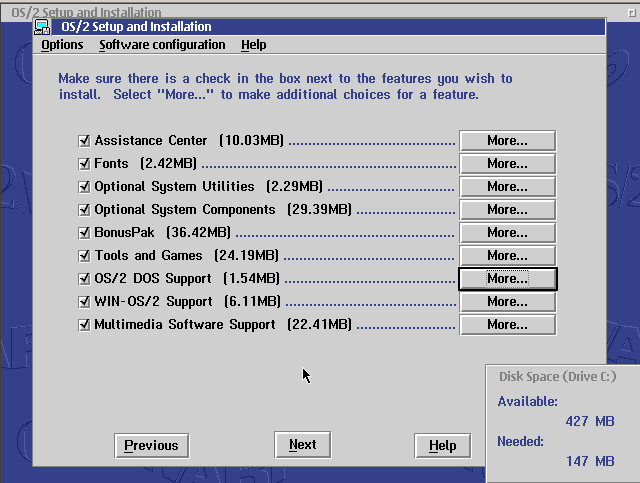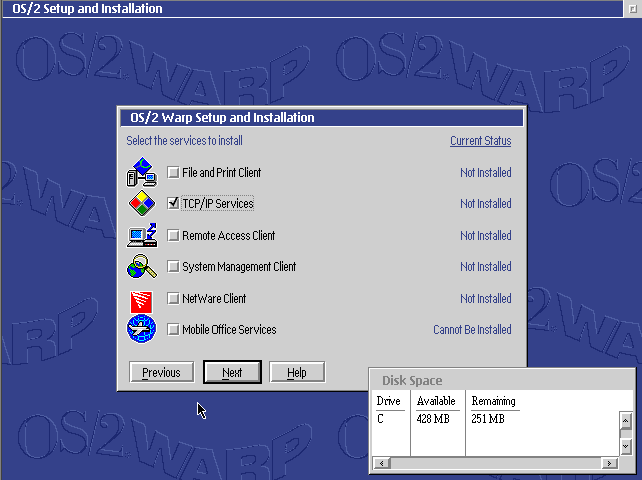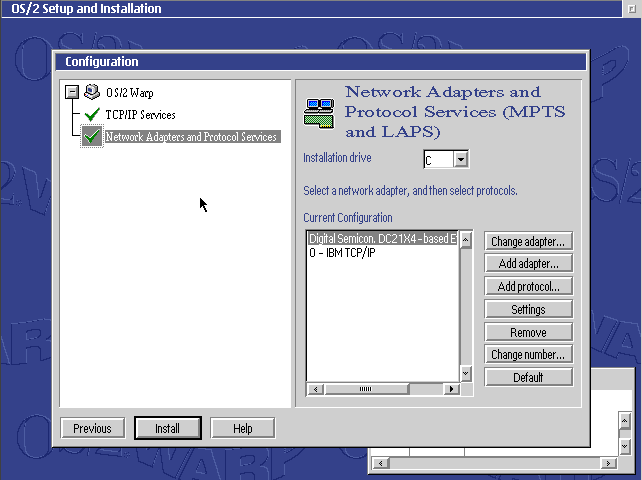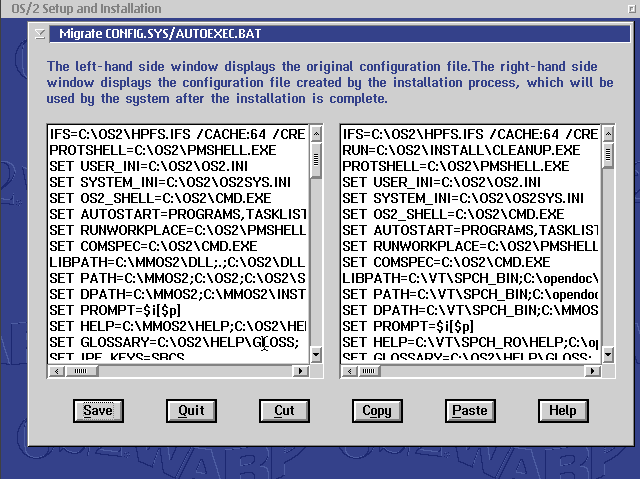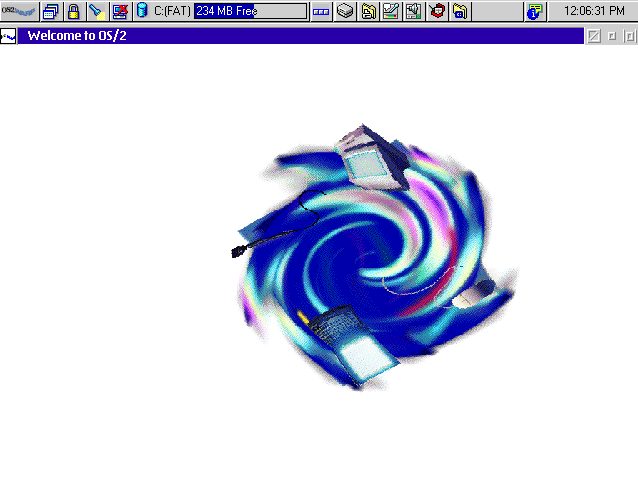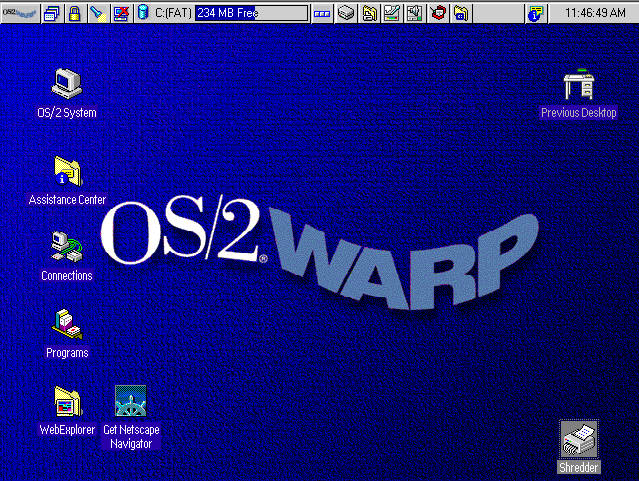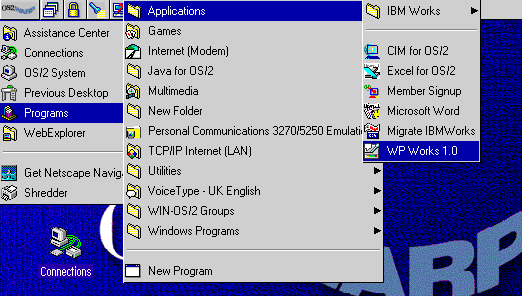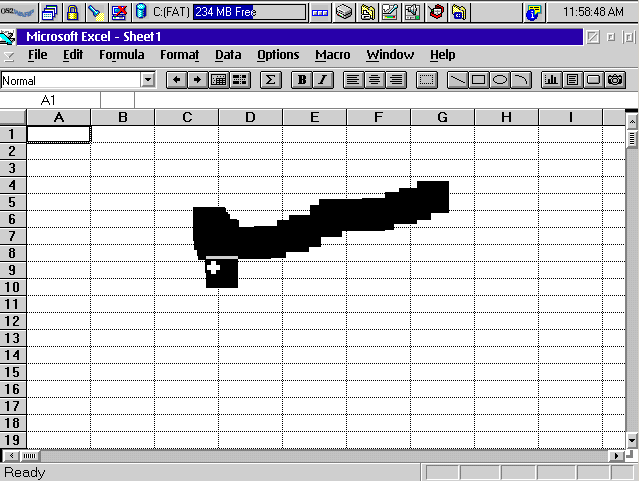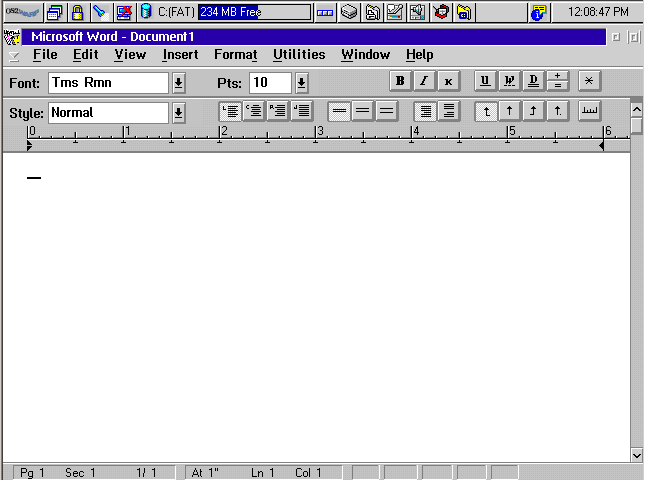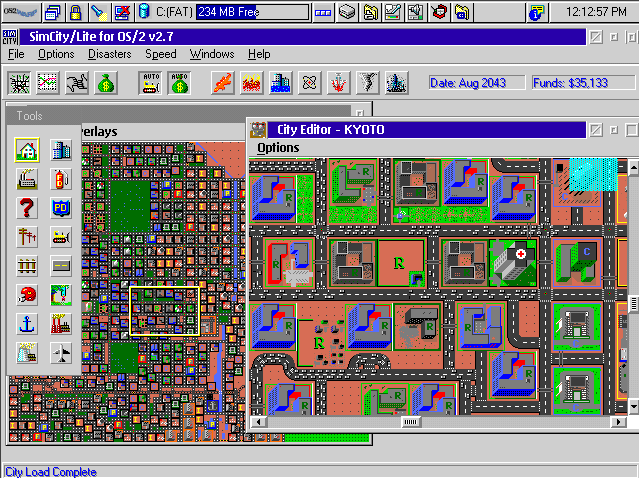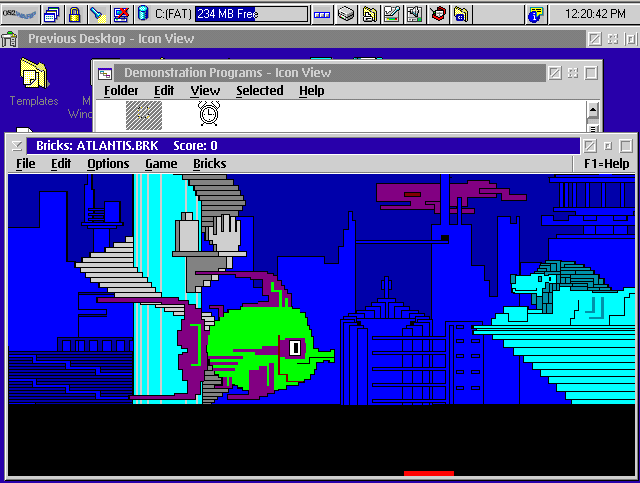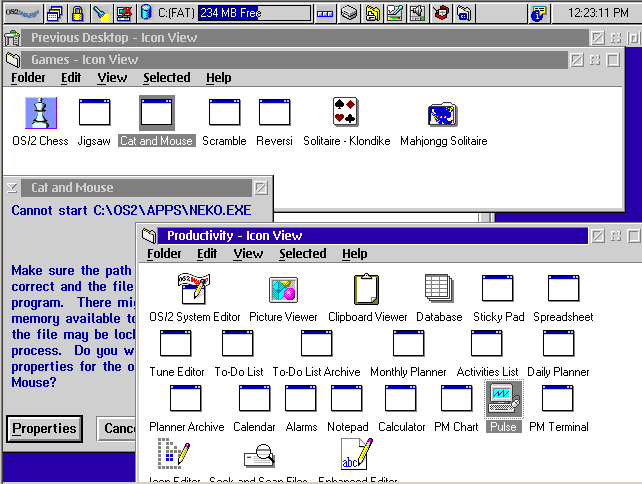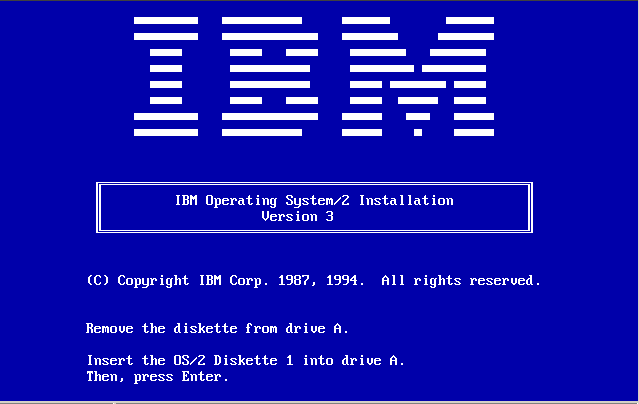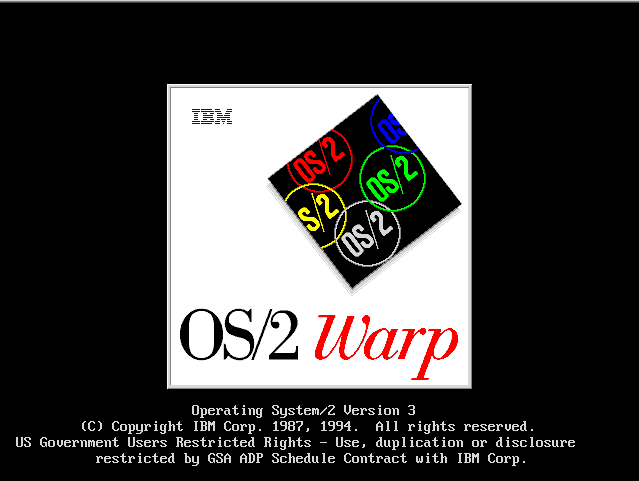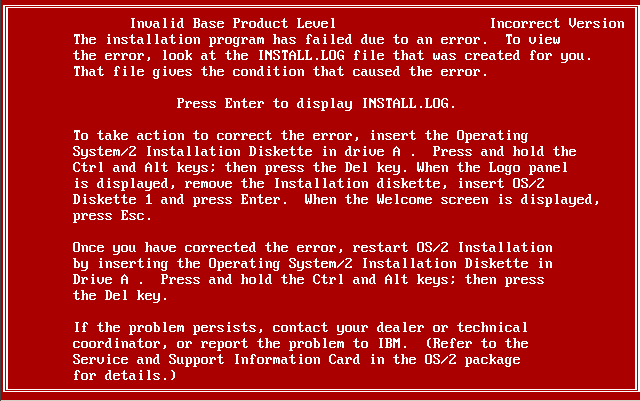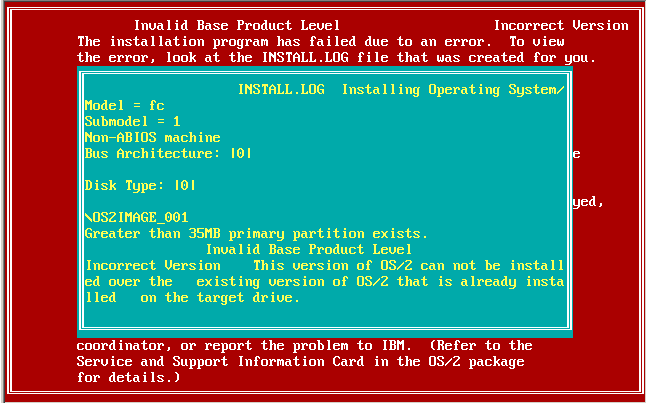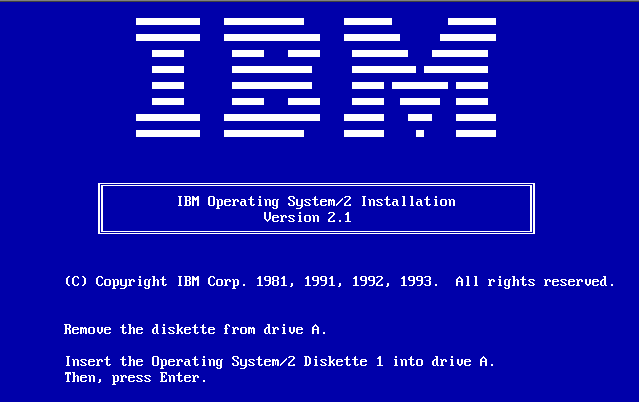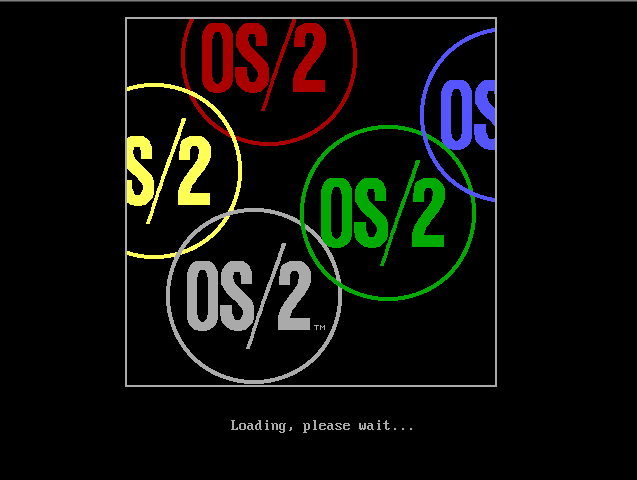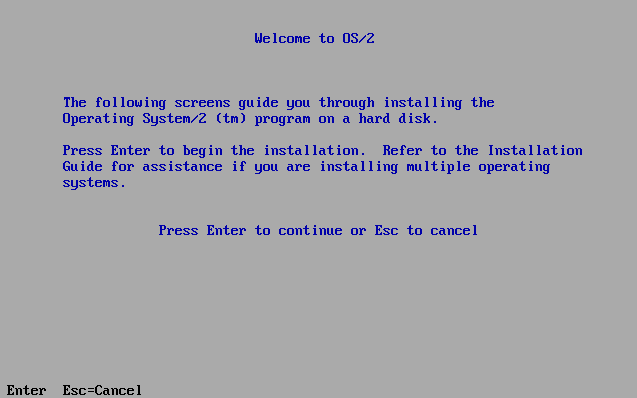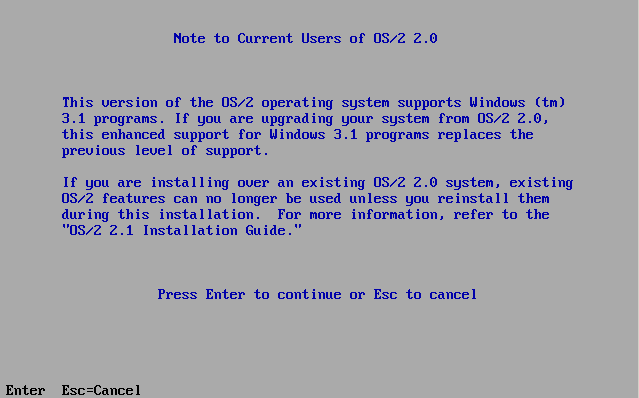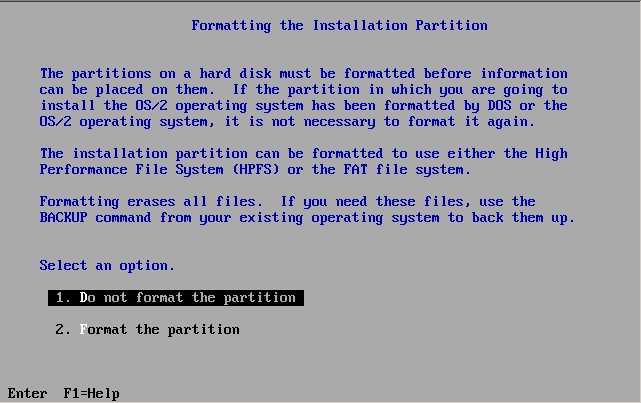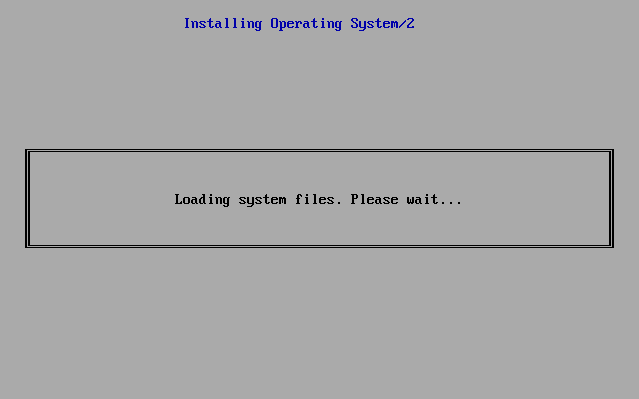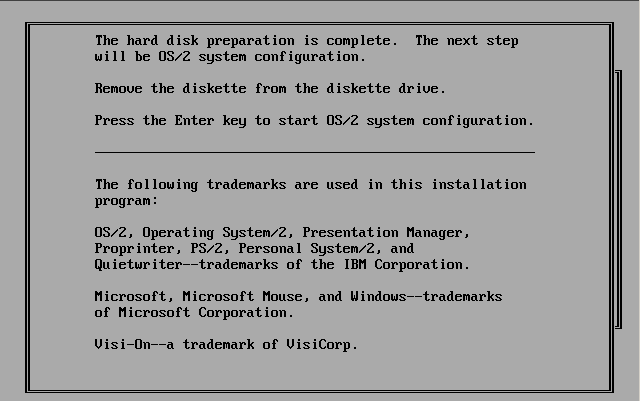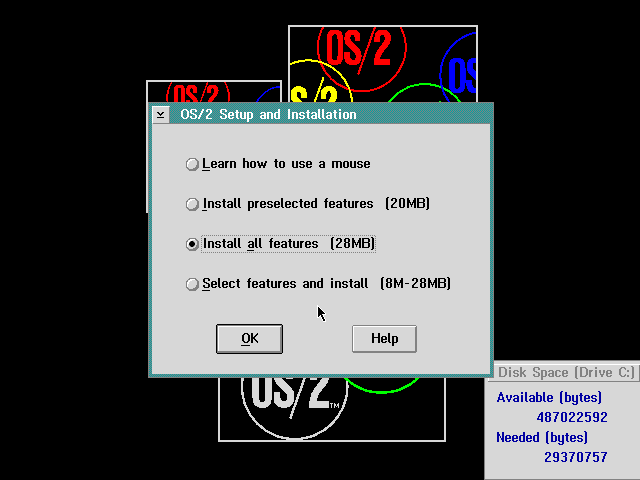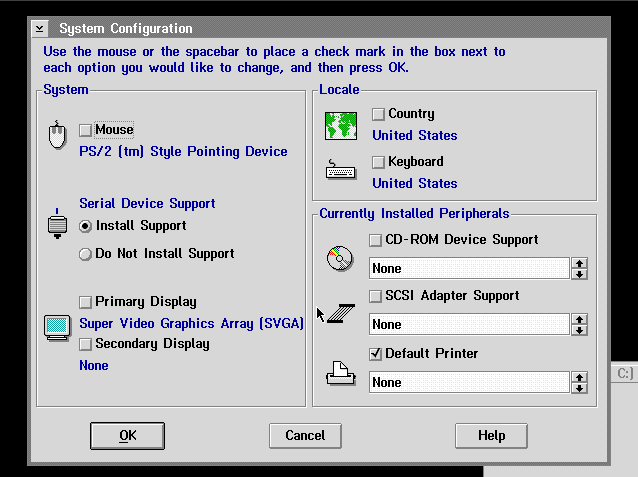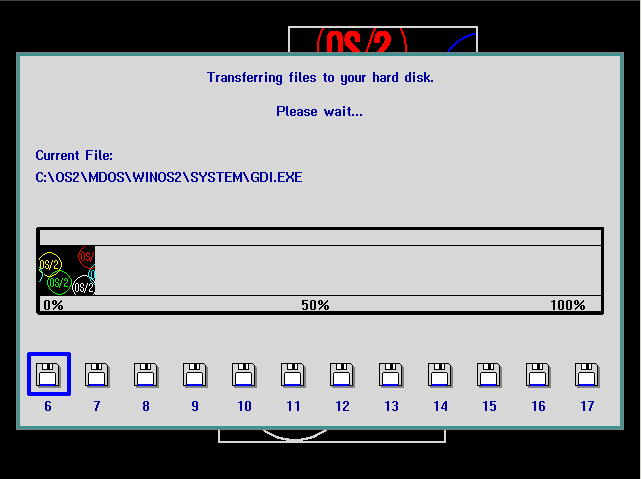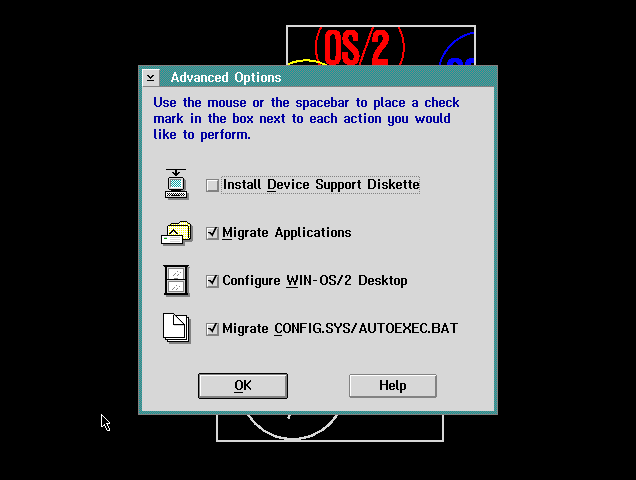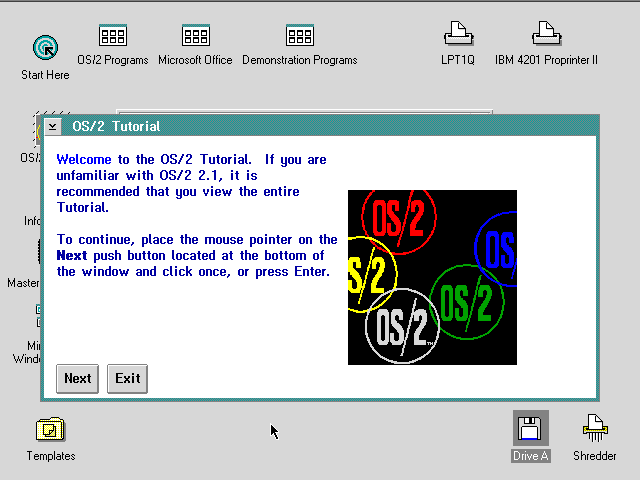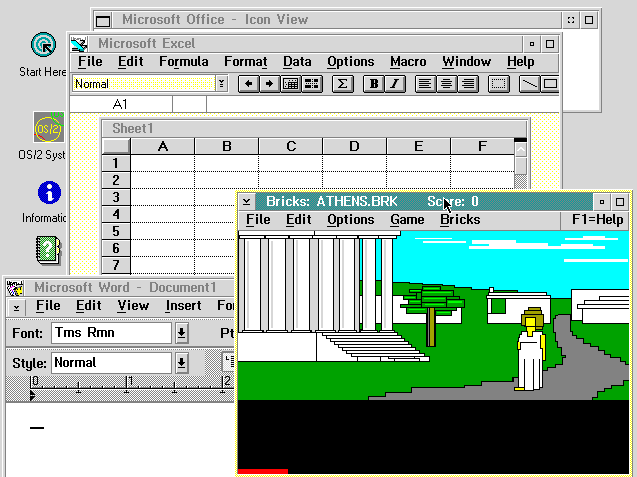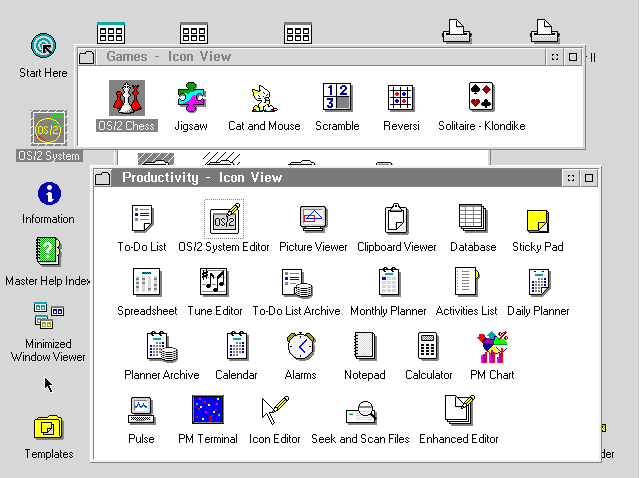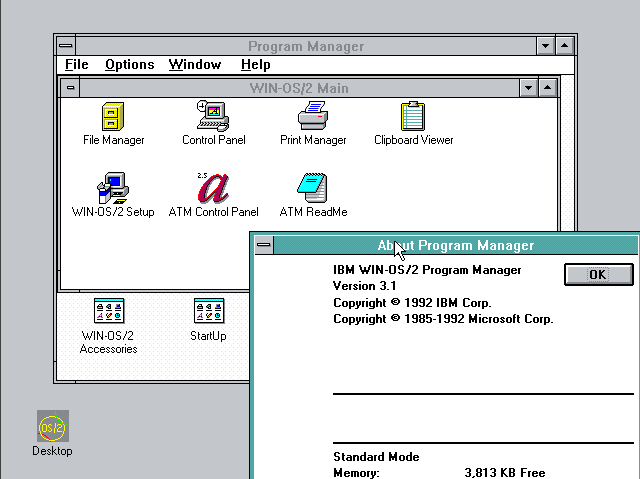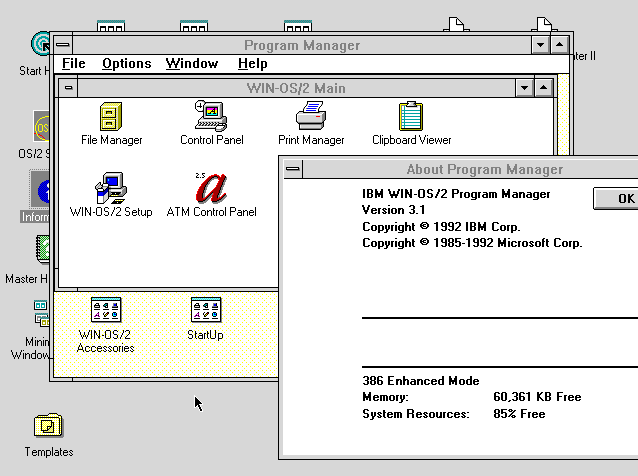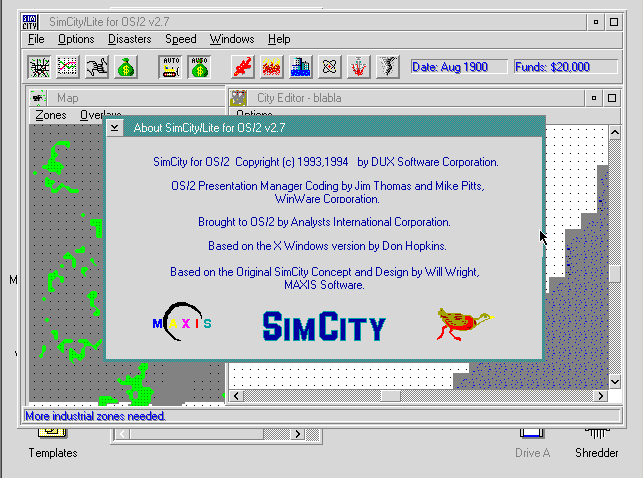Continuing from my previous post, I scored a lot of OS/2 Warp 3.0 media on ebay, and a kind person sent me some disk images of Warp 3.0 blue spine!
Now the downside is that while Virtual PC 2007 supports XDF to some extent, it doesn’t like the XDF driver that comes with Warp 3.0… Which I guess isn’t a surprise, anyone would after all be loading the latest version, I mean who would load up and upgrade every version of OS/2 for the heck of it?
So as it is pointed out here, simply replace the ibm1flpy.add & xdfloppy.flt from OS/2 4.0 and it’ll work!
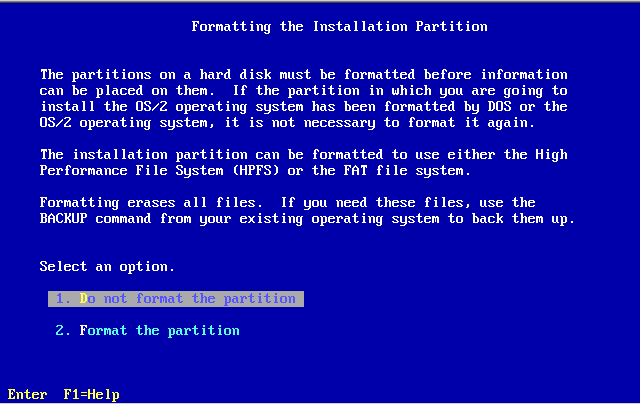 Now we get the usual, do we want to format my disk… As always the answer is NO… But it’s so delightfully colorful now!
Now we get the usual, do we want to format my disk… As always the answer is NO… But it’s so delightfully colorful now!
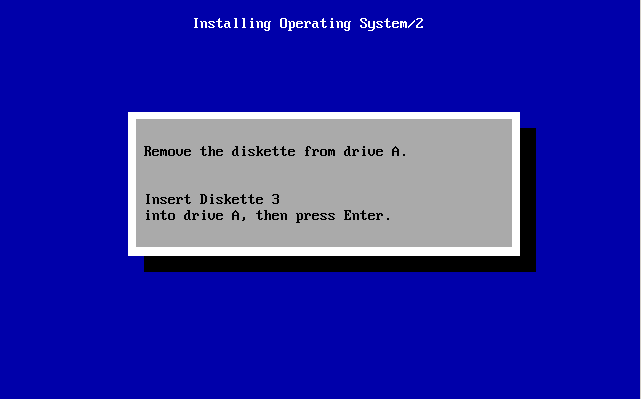 Then it’s a simple matter of feeding it disks, and waiting for it to chew through the 6 disks… Â I remember on a physical machine, these XDF’s weren’t exactly speedy.
Then it’s a simple matter of feeding it disks, and waiting for it to chew through the 6 disks… Â I remember on a physical machine, these XDF’s weren’t exactly speedy.
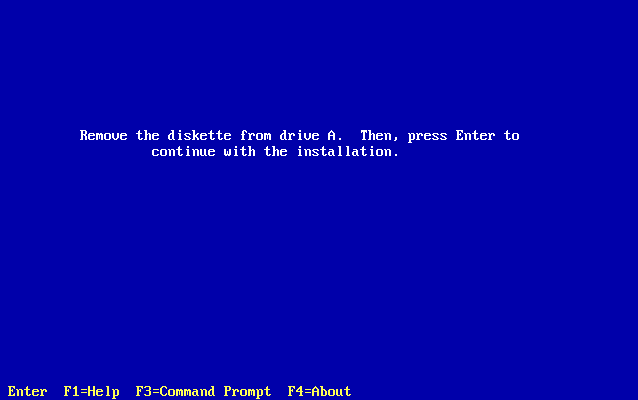 And then with that out of the way, it’ll be time to reboot, into the GUI, and to see how much hardware (if any) has been preserved.
And then with that out of the way, it’ll be time to reboot, into the GUI, and to see how much hardware (if any) has been preserved.
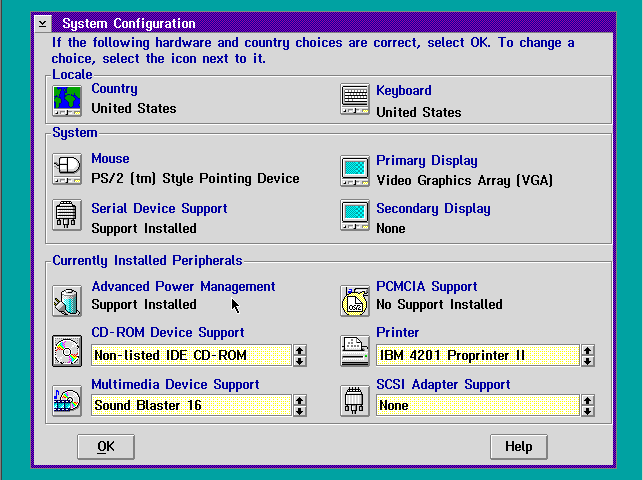 I had to change the Video to regular VGA, for some reason it this this is a Chips video…? And it had no idea about the CD-ROM. Â It did pick up the sound blaster, and it kept my printer!
I had to change the Video to regular VGA, for some reason it this this is a Chips video…? And it had no idea about the CD-ROM. Â It did pick up the sound blaster, and it kept my printer!
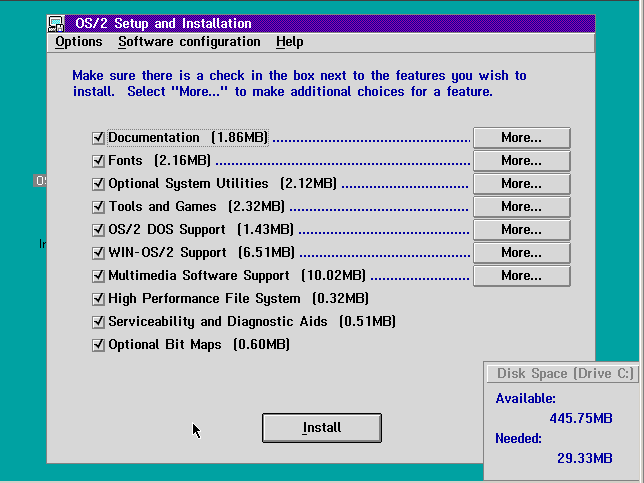 Wow fully loaded out, and 29.33MB. Â I can’t remember the last time getting so much out of so little. Â Anyways, time to swap more disks…
Wow fully loaded out, and 29.33MB. Â I can’t remember the last time getting so much out of so little. Â Anyways, time to swap more disks…
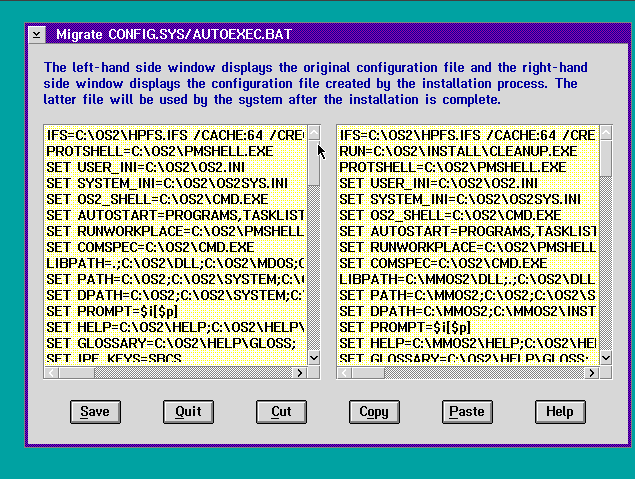 And as part of the update, it’ll let you compare your config.sys with a before and after… And honestly… WTF?  Since the lines are so long, why did someone thing this was actually legible?
And as part of the update, it’ll let you compare your config.sys with a before and after… And honestly… WTF?  Since the lines are so long, why did someone thing this was actually legible?
I know it’s part of the legacy of config.sys, but really.. WTF!
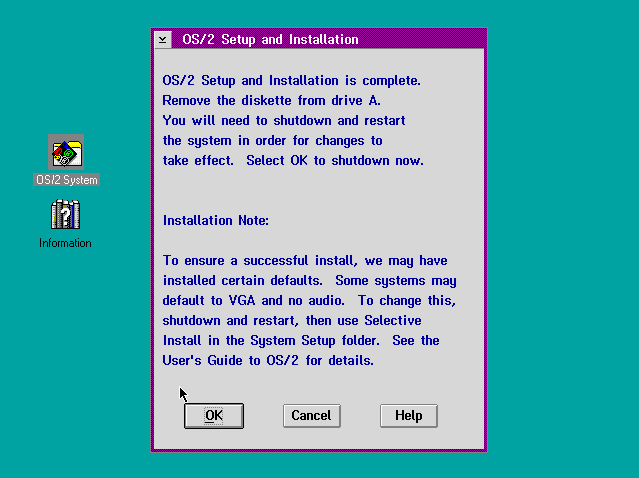 Well we’ll just trust it’s upgrade process, and let it ride!
Well we’ll just trust it’s upgrade process, and let it ride!
So we reboot, another splash logo and….
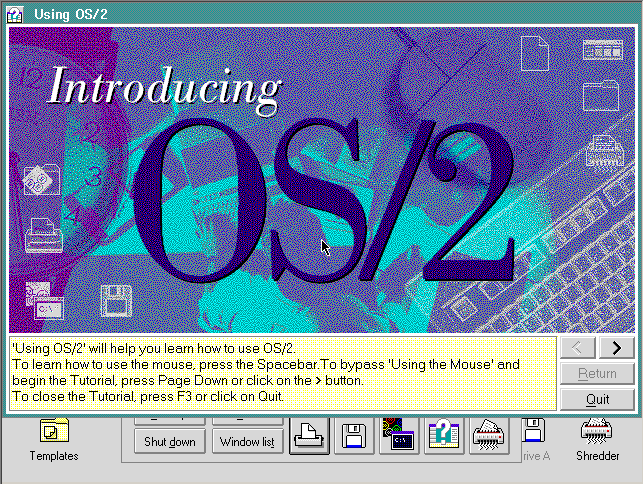 We not only get the desktop, the tutoral, Introducing OS/2. Â Which is really nice looking. Â It’s like they hired someone that’s not old school IBM to do this. Â It’s at least a big enough of a change since the days of OS/2 1.2’s tutorial.
We not only get the desktop, the tutoral, Introducing OS/2. Â Which is really nice looking. Â It’s like they hired someone that’s not old school IBM to do this. Â It’s at least a big enough of a change since the days of OS/2 1.2’s tutorial.
Closing that, I get the desktop. Â I’m no fan of the launchpad, so I just shred that thing from the get go. Â I know I know.. it’s like windows 95’ish but from 1994.
And how did my legacy applications hold up?
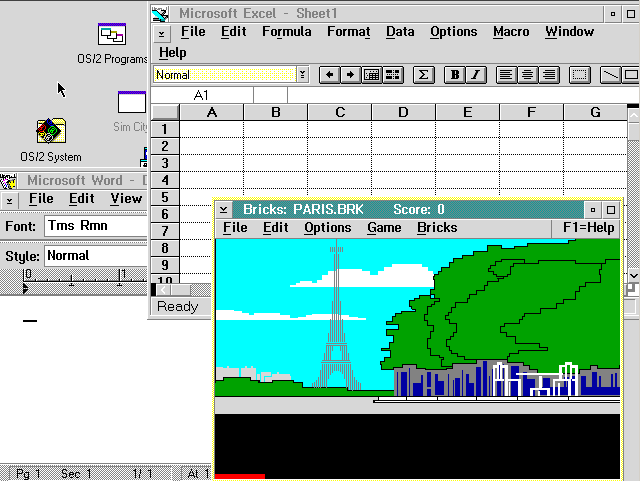 Bricks from OS/2 1.1 is still there, and still works great. Â Word & Excel also working, just as they did when I installed them in OS/2 1.2.
Bricks from OS/2 1.1 is still there, and still works great. Â Word & Excel also working, just as they did when I installed them in OS/2 1.2.
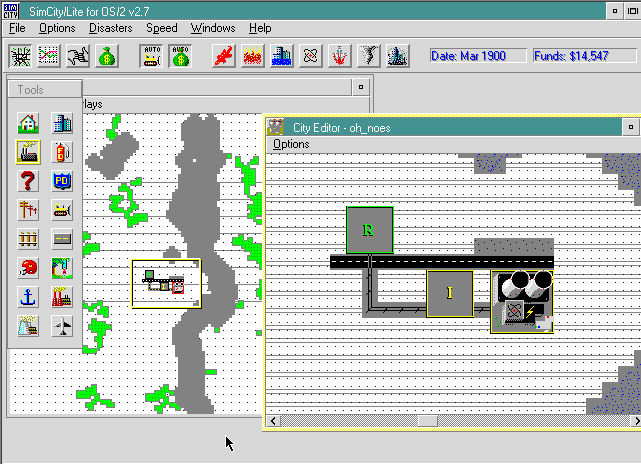
Even SimCityLite is working, along with DOOM. Â I’d have to give Warp an A+ on it’s migration from OS/2 2.1. Â It did look a little scary with the config.sys thing from hell, but really you can tell a *LOT* of work went into this release of OS/2.
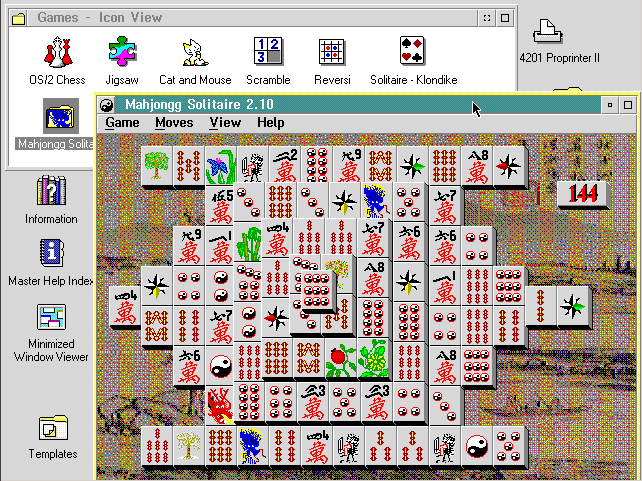 Speaking of games, Warp gave us.. Mahjongg Solitaire.  I don’t know why it’s not spelled Mahjong, maybe it’s some British English vs US English thing?  Anyways I’ve always associated the game with old ladies, and gambling rings.  Honestly IBM would have been better off paying out some developer for a ‘top selling game’ and doing an OS/2 version.  Even in OS/2 2.0 it is possible to write 32bit programs that’ll run in VGA 320x200x256 mode, which was still popular with plenty of the MS-DOS games of the time.  But I guess even a full screen port of DOOM wouldn’t be all that IBM GREY/PC/DULL enough.  Oh well even Tetris would have been a popular game.
Speaking of games, Warp gave us.. Mahjongg Solitaire.  I don’t know why it’s not spelled Mahjong, maybe it’s some British English vs US English thing?  Anyways I’ve always associated the game with old ladies, and gambling rings.  Honestly IBM would have been better off paying out some developer for a ‘top selling game’ and doing an OS/2 version.  Even in OS/2 2.0 it is possible to write 32bit programs that’ll run in VGA 320x200x256 mode, which was still popular with plenty of the MS-DOS games of the time.  But I guess even a full screen port of DOOM wouldn’t be all that IBM GREY/PC/DULL enough.  Oh well even Tetris would have been a popular game.
One thing that bugged the hell out of me was the sounds. Â It still was annoying to use OS/2 in an office with it constantly making noise… But in all fairness it was kind of the rage of the time, even Windows to this day has all the hooks in for it’s themes of custom mouse pointers, and GUI actions. Thankfully we’ve all moved beyond that.
This was going to be the the effort to really wow people before Windows 95 shipped.  In some regards it really was too little too late.  The world was shifting away from the idea of an isolate powerful ‘workstation’ to the connected computer.  As it does say on the box, this was the ‘on ramp to the information super highway.  In my opinion this is where OS/2 weakspots really started to show through.  First TCP/IP was an addon, not part of the OS.  I don’t know how they thought slapping other diskettes in the box is ‘ok’ but it’s not part of the default install, and easily missed by novice users.  The next, and forever lamented part is that it only included support for dialup.
That’s right, although dialup was pretty much the norm for 1994, the world was rapidly changing, and the first cable modems were starting to be slowly rolled out.  It also meant in the corporate world as LANS had taken over everything, and companies were just starting to think about TCP/IP and internet strategies, OS/2 was setup to be left out.  Instead, someone at IBM decided that LAN based network should be a premium and people should pay twice the price for OS/2 Warp connect.  This proved disastrous.
Right about this time, Microsoft had released Windows for Workgroups, which was all about LAN / NetBEUI access, but they even did throw out a free TCP/IP protocol upgrade. Â Windows NT 3.1 had finally shipped, and it too included LAN TCP/IP support. Â Then it was cemented in the more responsive Windows NT 3.5 which had a smaller memory footprint, and of course included support for PPP/SLIP along with LAN networking, and support for IP forwarding! Â That’s right you could use Windows NT 3.5 as a router!.. (Yes, even the workstation version).
However IBM did at least have the foresight to include popular internet programs in their internet pack (which sadly I don’t have.  I’ll have to review it later), I recall it had a gopher client, NNTP client (Probably News/2 from the TCP/IP for OS/2 2.0 days) and a cut down version of LAMAIL…
The other massive shift online was the coming rise of the web browser. Â Specifically Mosaic. Â And Mosaic ran on all kinds of UNIX platforms. Â It even ran on Windows NT. Â They even made it ‘safe’ enough to run on Win32s. Â But there was no port to OS/2. Â Thankfully someone recognized the importance of Win32s, and provided a driver to interface Windows 3.1’s 386 enhanced mode, to a workalike driver for Win32s.
 I chose the ‘runtime’ version of Win32s 1.1 .. I just wanted to see if it’d work.
I chose the ‘runtime’ version of Win32s 1.1 .. I just wanted to see if it’d work.
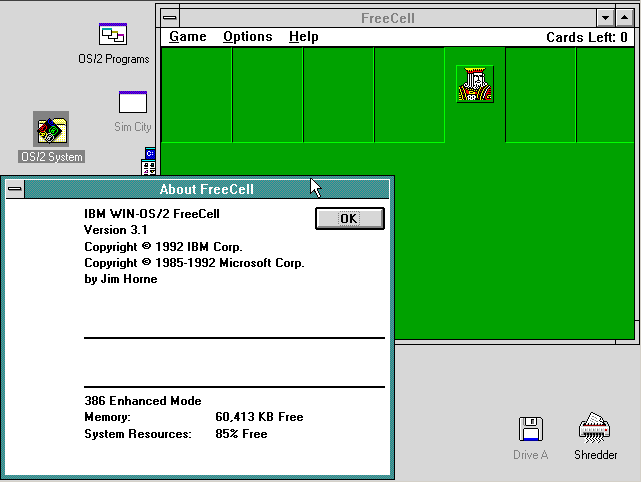 And the good news is that not only did it work, but it runs in seamless mode, with OS/2 1.1’s color scheme. Â Pretty snazzy.
And the good news is that not only did it work, but it runs in seamless mode, with OS/2 1.1’s color scheme. Â Pretty snazzy.
There was a short windows, but it was there, while people were on dialup, and before Windows 95 had shipped and had some extended driver support under it’s belt, OS/2 was the best way to run Win32s stuff outside of Windows NT. Â But even people who had devices like this thing I had at the time:
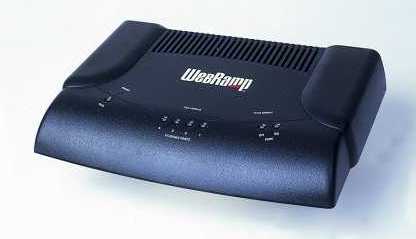 The web ramp was really cool, it had 3 serial ports, which let you connect 3 modems. Â It would then round robin your outbound requests so that people could share all 3 lines (if you had them) and it did NAT in hardware. Â This mean in the age of dialup this little guy would let you build a small LAN (it had a 4 port ethernet hub in the back) and suddenly all the computers at home with ethernet were online. Â It’s stuff like this that really left people asking why did OS/2 warp have such a substandard networking stack.
The web ramp was really cool, it had 3 serial ports, which let you connect 3 modems. Â It would then round robin your outbound requests so that people could share all 3 lines (if you had them) and it did NAT in hardware. Â This mean in the age of dialup this little guy would let you build a small LAN (it had a 4 port ethernet hub in the back) and suddenly all the computers at home with ethernet were online. Â It’s stuff like this that really left people asking why did OS/2 warp have such a substandard networking stack.
The year was 1994, the internet was starting to gain momentum.  Windows 95 was a year and a half away.  The answer to Windows 95 would no doubt be OS/2 4.0.  Would IBM do anything about these shortcomings?
We’ll find out as we upgrade to ‘project Merlin’ AKA OS/2 4.0.
